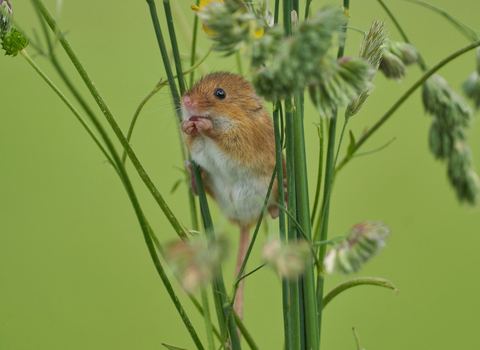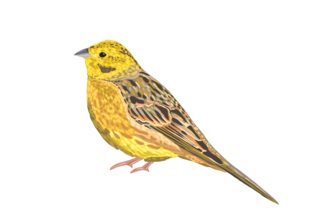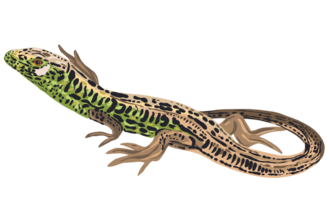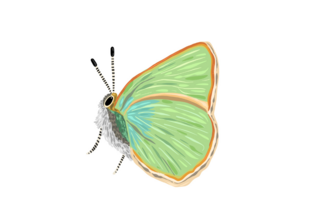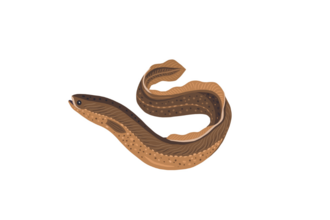Europe’s smallest rodent, weighing no more than a two-pence coin and measuring as little as 5cm, the super-cute Harvest Mouse needs our help.
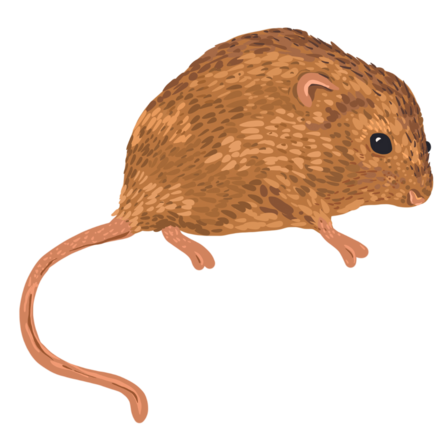
Bea Baranowska Illustration
These extremely active and agile climbers have beautiful pale gingery-yellow fur, and white bellies. The prehensile tail, used as a ‘fifth limb’ to assist in climbing, including up vertical grass stalks, is almost hairless and nearly as long as its body. No other UK rodent can use its tail in this way.
While Harvest Mice are present on several SWT reserves including Thundry Meadows and Papercourt Marshes, you are unlikely to spot these hyperactive animals ‘in person’. However, if you look very carefully their spherical, tennis-ball sized nests of tightly woven grass are more detectable, placed high-up in tall grasses. Given high natural predation rates, Harvest Mouse are evolved to produce as many as three litters of up to six young a year, with breeding taking place continuously between May and October.
Why they matter
As well as being appealing in their own right, this tiny but charismatic character inhabits unpolluted and carefully-managed reedbeds, woodland-edges, field-margins, as well as road-side verges, hedges and unmown meadows.
All of these places need better protection to enable a myriad of native UK birds, mammals, amphibians and invertebrates to live and breed safely. The seeds, fruits and insects that sustain Harvest Mice are also vital components of the lower food chain. In short, if we lose Harvest Mice, it is a bad sign that something is very wrong and many more species could soon follow.
Formerly common and thus iconic, Harvest Mice are now listed as Near Threatened in Great Britain. They are a priority conservation species as their populations have declined so steeply in recent years, largely due to changes in agricultural and land management practices that have left fewer and more fragmented spaces in which nature can thrive.
How we're helping
We’re working hard to improve and extend our network of hedgerows, including at the Holmesdale group of sites including The Moors, Kitchen Copse and Spyne’s Mere. We’re carefully managing woodland verges and wildflower meadows that serve wildlife and store carbon at Quarry Hangers and Graeme Hendry Wood. We're also working with local volunteers to maintain dense reedbed habitats at Unstead Wetland Nature Reserve near Guildford.
With your help, we can do much more of this on SWT-managed land right across Surrey – and perhaps even more importantly, we can collaborate with more landowners and farmers to support nature-friendly practices that are good for wildlife and for people. If we work together to achieve this, Harvest Mice and many other species will have a secure future here.
Other species in need
The decline of species like the Nightingale, Yellowhammer, and European Eel is not just a concern – it’s a call to action. These iconic creatures, along with others like the Harvest Mouse and hairstreak butterflies, need our help to thrive once again in their natural habitats. To find out more about each of these species and how we're helping them, click below.

